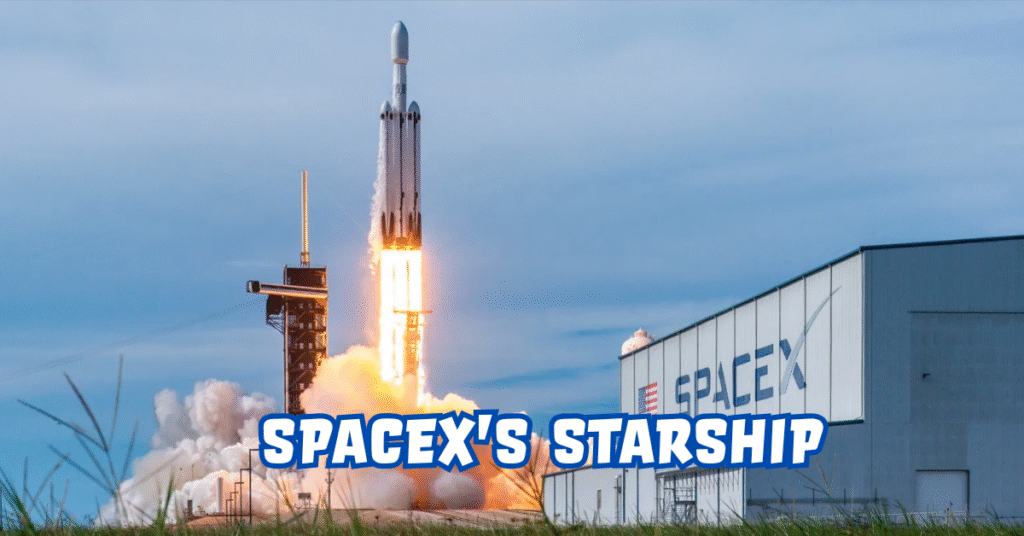Starship is scheduled to fly its eleventh test mission, pushing the limits of reusable rocketry and ambition. But before that, a clearer understanding of its past is essential. Over ten previous attempts, SpaceX has experienced both explosive setbacks and incremental successes, each shaping lessons for what comes next. This article provides a comprehensive, fact-based recap of Starship’s first ten launches — their objectives, outcomes, challenges, and the evolution over time — and frames how those histories inform the upcoming mission.
By reading ahead, you will gain insight into how the Starship program has progressed, the nature of test flight risk, the technical pivots made, and why patience and iteration are critical in spaceflight. The eleventh mission isn’t just another launch — it stands on the shoulders of a turbulent yet instructive journey.
The Ambition Behind Starship
Starship is more than a rocket — it is SpaceX’s bet on the future of large-scale space travel. Designed as a two-stage system (the Super Heavy booster and the Starship upper stage), the goal is full reusability, high payload capacity, and the ability to sustain missions to the Moon, Mars, and beyond. Each test flight is a step in validating systems: engines, structural integrity, thermal protection, stage separation, reentry, and landing. Failures are expected; they teach what needs redesign. Over ten flights, the program’s cumulative narrative is one of iterative engineering under high stakes.
In the run-up to the eleventh mission, engineers are integrating changes to heat shields, engine relight capability, structural resilience, and landing control. The past launches offer a roadmap of what works, what doesn’t, and how SpaceX has adapted.
Overview: Ten Starship Test Launches
Below is a tabular summary of Starship’s first ten test flights, highlighting mission goals, outcomes, and lessons learned.
| Flight No. | Date / Year | Prototype (Booster / Ship) | Primary Test Goals | Outcome / Failures | Key Lessons |
|---|---|---|---|---|---|
| 1 | April 2023 | Block 1 (B7 / S24) | Clear pad, basic liftoff | Failure, flight termination | Launch mount damage, control during ascent |
| 2 | November 2023 | B9 / S25 | Hot staging, transatmospheric burn | Boostback failure + upper stage lost | Engine reliability, plumbing robustness |
| 3 | March 2024 | B10 / S28 | Long burn, propellant transfer test | Booster destroyed, stage lost | Filter blockage, structural dynamics |
| 4 | June 2024 | B11 / S29 | Controlled splashdowns, reentry | Success in splashdowns, survivability | Validated reentry and landing capability Wikipedia |
| 5 | Late 2024 | Block 1 series | Tower catch attempt, full reentry | Mixed success, catch attempts partial | Robotic arms concept stress-tested |
| 6 | Late 2024 | Block 1 | Various maneuvers | Loss on reentry or staging | Thermal protection improvements needed |
| 7 | January 2025 | B14 / Ship33 (Block2) | Higher performance, payload simulators | Flight termination due to propellant leak Wikipedia+1 | Leak control, sensor resilience |
| 8 | Early 2025 | Block2 variant | Integrated test | Explosion mid-flight during ascent | Engine throttling, structural buckling |
| 9 | Mid 2025 | Block2 | Chopstick tests, landing control | Partial failures, structural damage | Catch mechanisms, tile adhesion |
| 10 | August 2025 | B16 / S37 | First satellite deployment, reentry & landing | Success in many objectives, controlled splashdowns SpaceX+1 | Milestone: payload deployment, refined reentry control |
This table captures the arc: early catastrophic failures, mid-course corrections, and the more measured success in Flight 10, which achieved several major milestones.
Flight-by-Flight Highlights and Engineering Narratives
Flight 1 – April 2023
The inaugural Starship integrated launch was daring but wrought with risk. Though the rocket cleared the pad, loss of vector control and a spin forced a flight termination. The launch pad itself sustained significant damage, highlighting that ground infrastructure must match vehicle ambition. The lesson: pad design must endure full-thrust launches, and safe abort systems need more margin.
Flight 2 – November 2023
This flight introduced hot staging, the technique where the upper stage ignites before full separation. The booster attempted boostback but suffered multiple engine failures and exploded during descent. The upper stage tried to continue but eventually failed after venting issues. The complexity of fluid systems, plumbing, and staging was underscored.
Flight 3 – March 2024
SpaceX attempted more sophisticated objectives: extended burns, internal propellant transfer, Starlink simulator dispensing. The booster again failed during landing burn, and the upper stage derailed its mission. Diagnostics implicated filter blockages in engine feed lines. Engineers began revising plumbing and filters in response.
Flight 4 – June 2024
A turning point. Both booster and upper stage executed controlled splashdowns in ocean zones, with the spacecraft surviving peak reentry heating. This was the first time the integrated system survived atmospheric reentry and achieved vertical descent. That success allowed regulators to waive a mishap investigation under certain constraints. Wikipedia
Flights 5 & 6 – Late 2024
These attempted Tower Catch operations, where the booster would be grabbed by “chopsticks” robotic arms on the tower as the ship lands. Each carried high risk. Partial successes and failures occurred—some catch attempts succeeded imperfectly, others resulted in collision or arm misalignment. These stressed the mechanisms, timing, and control authority needed in dynamic capture operations.
Flight 7 – January 2025
Using the Block 2 architecture, this test carried payload simulators and aimed for more aggressive performance. A propellant leak in the Starship led to telemetry dropout and a flight termination. The incident pointed to structural sealing, sensor redundancy, and valve robustness as high-priority focus areas. Wikipedia
Flight 8 – Early 2025
This mission also employed Block 2 vehicles. The rocket attempted integrated maneuvers but exploded roughly ten minutes in after engine failures. Though the booster catch might have succeeded in partial form, the upper stage disintegrated. The result reaffirmed that engine reliability under varying throttle and pressure conditions remains a chief hurdle.
Flight 9 – Mid 2025
In this mission, SpaceX attempted more refined control over reentry, tilting maneuvers, and catch trials. While some booster maneuvers succeeded or partially succeeded, structural damage and tile loss became more evident. The lessons here sharpened future focus on thermal panels, tile adhesion, and aerodynamic control seal margins.
Flight 10 – August 2025
The breakthrough. This test flight successfully deployed eight Starlink mass simulators, marking the first time Starship performed a payload operation. Both booster and ship executed controlled splashdowns. The upper stage survived reentry and flipped for landing burns, even with visible thermal damage. Critics note that not all landing goals were perfect, but the mission is widely viewed as the most complete thus far. SpaceX+1
This success represents a culmination of learning: from pad damage to flight controls, structural integrity, thermal systems, sensor robustness, and landing choreography.
Evolution: From Wild Risk to Measured Iteration
Across those ten flights, SpaceX’s approach evolved. Early tests were radical stress tests—push systems to breaking. Failures were frequent, but each fed data back into redesign. The mid-phase engaged in more intentional improvements—better heat shields, plumbing, sensor arrays. Toward flight 10, goals matured to executing real mission tasks (i.e. payload deployment and controlled splashdowns).
Key themes of evolution include:
- Thermal Protection Refinement: Tiles and heat shield bonding have been repeatedly reworked.
- Engine Control Algorithms: More nuanced throttle, staging logic, and relight sequencing.
- Sensor Redundancy & Telemetry: Loss of signal was a recurrent cause for aborts.
- Landing Control and Catch Mechanisms: Iterations in robotic arms, timing windows, actuator precision.
- Structural Reinforcement: To survive aerodynamic loads, vibration, and fluid slosh.
The narrative is not a straight line upward, but a staircase of leap, fall, regroup, and ascend.
Broader Implications: What the First Ten Tell Us About Mission 11
As the eleventh mission approaches, here’s how the history shapes expectations and risk:
- Higher Confidence in Systems: Many subsystems have matured through repeated stress, so mission planners can target more aggressive maneuvers or operational goals.
- Payload Deployment Is Now Viable: Since Flight 10 proved this, mission 11 can build on that, refining deployment precision.
- Landing Ambitions Grow: Catch attempts or refined splashdowns might be emphasized, pushing reuse closer to truth.
- Risk Mitigation Matters More than Novelty: New test goals will likely be incremental rather than radical to reduce catastrophic loss.
- Data Value Continues: Even if full success isn’t achieved, the test will yield telemetry and fault signals critical for redesign.
Thus, the 11th flight is not a gamble off a cliff — it’s a calculated step on a course already charted by past trials.
Engineering Constraints and Programmatic Challenges
Reusability in rocketry is extraordinarily demanding. Some of the central challenges the Starship program continues to face:
- Thermal management and reentry heating: Ensuring tiles survive multiple flights.
- Engine reliability across cycles: Raptors must work under varying pressures, temperature, and throttle regimes.
- Structural loads and vibration: At full thrust and separation, the vehicle faces immense mechanical stress.
- Fluid plumbing and leak paths: Cryogenic propellants, seals, and valves must endure repeated cycles without leakage.
- Landing precision and control authority: Controlling flaps, orientation, and engine burns for vertical descent.
- Recovery & refurbishment turnaround: The goal is rapid reuse, so inspection, repair, and turnaround timings must shrink.
These constraints are not abstract—they played roles in almost every one of the first ten flights.
Why Flight 10 Marks a Turning Point
Flight 10 is widely regarded as a milestone: it was the first time Starship deployed payload simulators and achieved controlled reentry and splashdowns with many objectives met. That success gives engineers more confidence to push harder. It shows the hardware and software have matured to a degree where mission-like tasks are no longer speculative but plausible.
Still, perfection is not yet achieved. The thermal damage, imperfect splashdowns, and continued uncertainty about catch operations remain challenges. But Flight 10 shifts the narrative: from mere survival to operational ambition.
Table 2: Success Rate and Trends Over Time
| Metric | First 5 Flights | Next 5 Flights | Trend Observed |
|---|---|---|---|
| Major Objective Success Rate | ~1/5 | ~3/5 | Improvement in system integration |
| Booster Controlled Splashdowns | 0 | 2 | Better landing control |
| Payload Deployment Attempts | 0 | 1 | Transition to mission tasks |
| Landing Catch Attempts | Early trials only | More refined trials | Catch mechanics becoming credible |
| System Abort Modes | Many safety terminations | Fewer forced terminations | Fault paths better handled |
This table illustrates maturation: from early chaotic attempts to later integrated trials with higher success rates.
Looking Ahead to Flight 11 and Beyond
The eleventh mission is scheduled with optimism and caution. Using Booster 15 and Ship 38 (Block 2 versions), it will replicate the successful Flight 10 profile while adding further heat shield tests and engine relight experiments. The mission is expected to deploy eight Starlink simulators again, reenter the atmosphere, and attempt safe splashdowns — potentially pushing catch operations.
Flight 11 is also designated as the final Block 2 flight before transitioning to Block 3 architectures. That shift may include upgraded structural elements, more advanced tiles, or new engine iterations. Wikipedia
Future flights (12, 13, and beyond) are expected to use Block 3 and new pads (Starbase OLP-2). These will aim for full orbital capability and, eventually, catching the upper stage on the tower. Wikipedia+1
Thus, Flight 11 is both a culmination of one era and a transition to the next.
Themes, Risks, and What to Watch
- Incremental vs Radical Testing: Future tests will likely lean incremental to preserve hardware and data.
- Reusability Timeline Pressure: There is pressure to prove rapid turnaround, or the economic model suffers.
- Regulatory and Safety Oversight: As flights become more frequent and ambitious, FAA and local permissions matter more.
- Public Expectations & Narrative: Failures still attract headlines; balancing ambition with reliability is a communications challenge.
- Technology Integration: The success of Starship underpins SpaceX’s broader goals — Mars, Moon, orbital refueling, interplanetary logistics.
From here, each mission’s incremental success compounds the program’s viability. But the margin for error narrows as ambitions grow.
Frequently Asked Questions (FAQs)
1. Why has Starship had so many failures in its first ten flights?
Because these were high-risk, high-learning tests. SpaceX intentionally pushed systems to the edge to gather data on design flaws, control limits, thermal margins, plumbing leaks, and structural integrity.
2. Was Flight 10 the first ‘successful’ Starship launch?
It is widely considered the most complete success: it deployed payload simulators, survived reentry, achieved vertical splashdowns, and completed many objectives that earlier flights failed. SpaceX+2Wikipedia+2
3. What is “Block 2” vs “Block 3” in Starship?
These denote design iterations. Block 2 is the current generation undergoing tests; future flights (from mission 12 onward) plan to use Block 3 with structural, thermal, and performance upgrades. Wikipedia+1
4. Will the Super Heavy booster be reused?
That is the core ambition. Some flights have attempted catch operations or controlled splashdowns. Full reuse will require successful catch mechanisms or safe reuse after ocean landings.
5. When will Starship fly to orbit or carry crew?
The timeline is still speculative. Missions 12 and 13 aim for greater altitude, possibly orbital tests. Crewed flight would require even more reliability. SpaceX’s roadmap suggests these goals lie in the coming years, contingent on sustained success.
Conclusion
Starship’s tenth test flight may represent a turning point, but it is the cumulative story of all ten that gives it weight. Each mission was a laboratory: a chance to confront structural failures, thermal surprises, plumbing leaks, control logic errors, and landing miscalculations. Increment by increment, the system is moving from explosive risk toward resilient capability.
The 11th flight is not a gamble so much as a planned step, framed by a decade’s worth of failure, innovation, adaptation, and incremental victory. If it succeeds, it will validate the direction of Starship’s evolution. Even if it does not, it will yield more data — fuel for engineers to refine primitives. In rocketry, success is rarely instantaneous; it is forged in repeated attempts, each one illuminating the path forward.
As the day of liftoff approaches, observers will watch not only for fireworks, but for precision, data integrity, controlled splashdowns, and the deployments that turn test into mission. The Starship saga is not just about going higher — it’s about building a rocket resilient enough to do so repeatedly.
The next chapter begins with Flight 11, and the story’s next leap rests on lessons already written in soot, telemetry, and hard-won engineering.







